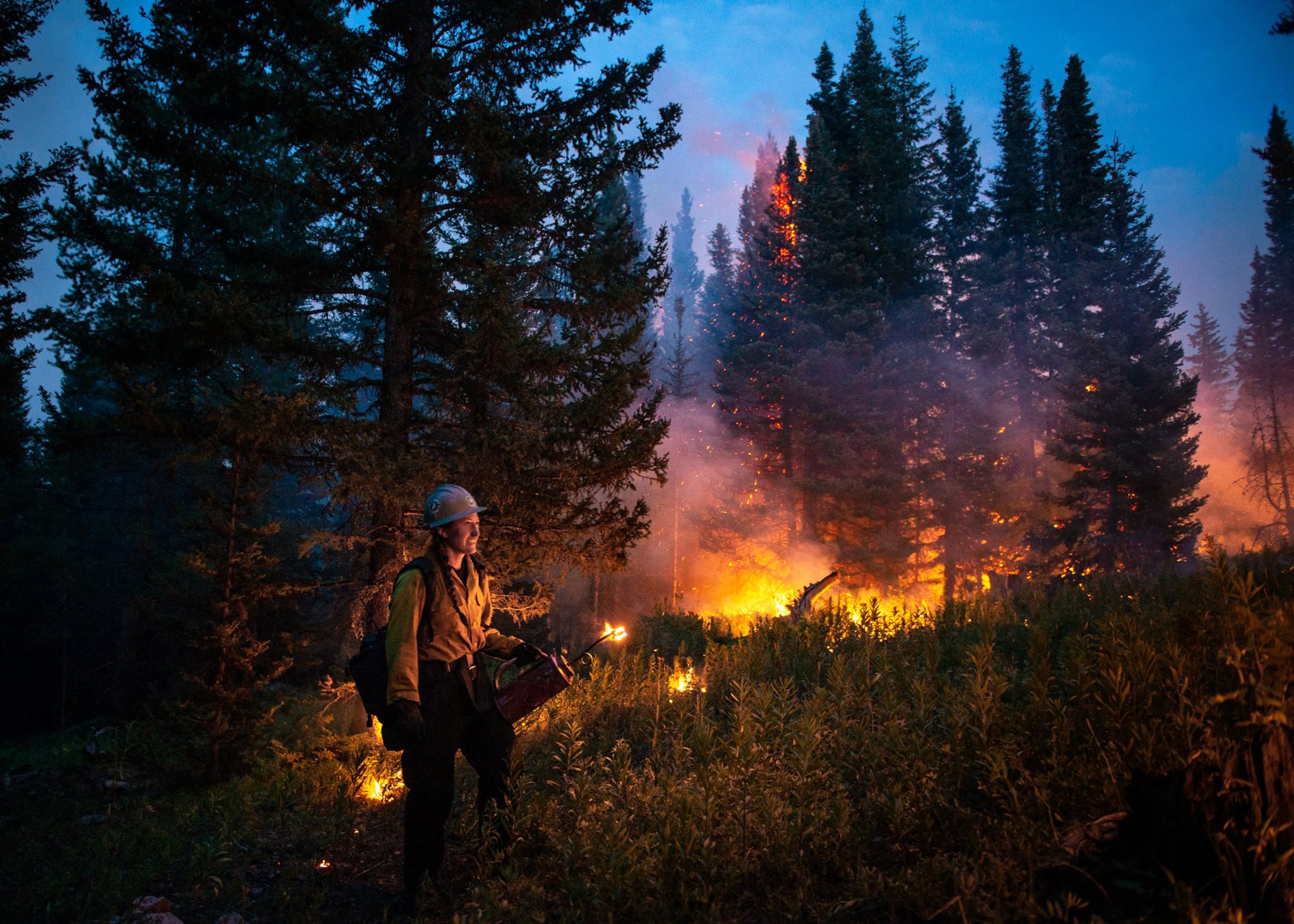

The number of Coloradans whose homes are at risk from wildfires soared 45 percent in five years, reflecting the state's booming population and changing uses of agricultural land, state officials said Monday.
The Colorado State Forest Service said 2.9 million people now live in the wildland-urban interface, defined as places where homes are built in or near areas that are prone to wildland fire.
That represents about half the state's population, estimated at 5.7 million as of July.
In 2013, the last time the state estimated the number of people living in fire-prone areas, it was 2 million.
The new statistics come as states across the West are faced with larger and more destructive wildfires, especially California.
A Northern California wildfire this month killed at least 85 people.
The biggest single reason for the growth of Colorado's fire risk is the conversion of agricultural land to other uses, said Mike Lester, Colorado's state forester and director of the State Forest Service.
Agricultural land is being added to the wildland-urban interface either because it is turned into housing developments or because it is taken out of farming and reverts to grassland, which is more fire-prone than farmland, Lester said.
An estimated 53,000 people moved to Colorado between July 2017 and July 2018, according to Natriece Bryant of the Colorado Department of Local Affairs. That's an average of more than 4,400 a month.
"We certainly aren't seeing the wildfire risk reducing the popularity of living in Colorado," said Carole Walker, executive director of the Rocky Mountain Insurance Information Association.
Colorado has the third-fastest-rising homeowner insurance rates in the country, she said, and while fire risk is part of the reason, hail storms play a bigger part.
Colorado is one of the most hail-prone states in the country, and hail is responsible for seven of the 10 most expensive catastrophes in state history, measured by insurance losses. Hail combined with a tornado was responsible for another one of the 10 worst.
Wildfires accounted for only two of the worst 10, ranking fourth and fifth. The Waldo Canyon Fire in Colorado Springs in 2012 destroyed nearly 350 houses and caused $493 million in damage, in 2018 dollars. The Black Forest Fire outside Colorado Springs in 2013 destroyed more than 480 homes and caused $450 million in damage.
Walker said Colorado still has a stable homeowners insurance market with plenty of providers, but insurance companies are taking an increased interest in wildfire mitigation — keeping homes safer by persuading homeowners to clear away flammable vegetation around their houses and use more fire-resistant building materials.
"The emphasis really has to be on educating them, making our communities safer," she said.
Also Monday, the State Forest Service updated its online mapping tool for determining the fire risk of specific areas, called the Colorado Wildfire Risk Assessment Portal or CO-WRAP.
Clicking on Weld County in northeastern Colorado, for example, produces a pop-up window that reads, "This location only has a minimal chance of being directly impacted by a wildfire."
But the message about parts of Mesa County in western Colorado warns of very high fire intensity and "great potential for harm or damage to life and property."
Lester said the mapping tool is more useful for community planners and firefighters than for individual homeowners, because the scale of the map isn't sufficient for pinpoint information.
Planners can use the mapping tool to determine what parts of the wildland-urban interface are most at risk and focus their mitigation efforts there, Lester said.
"There's not enough resources in this state to deal with all the mitigation problems we have," he said.
Residents can find fire mitigation tips on the State Forest Service website, Lester said.








